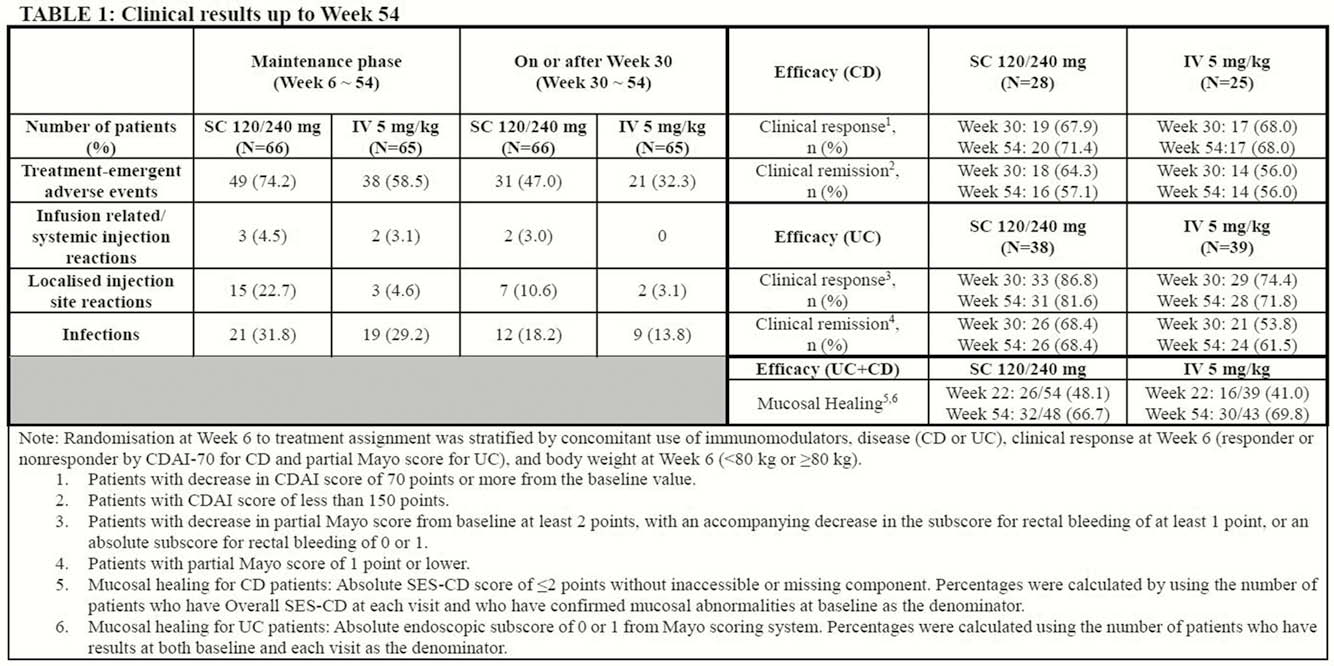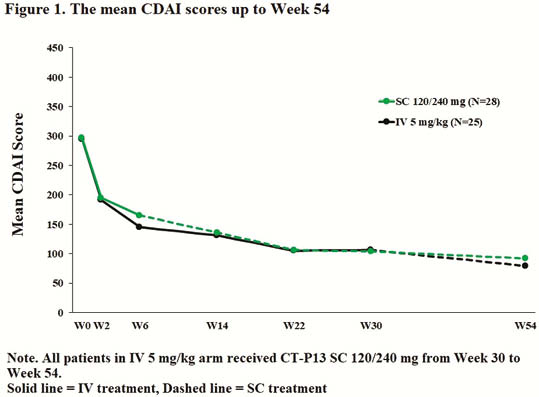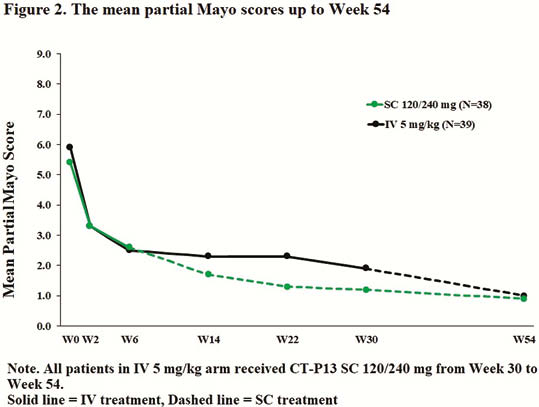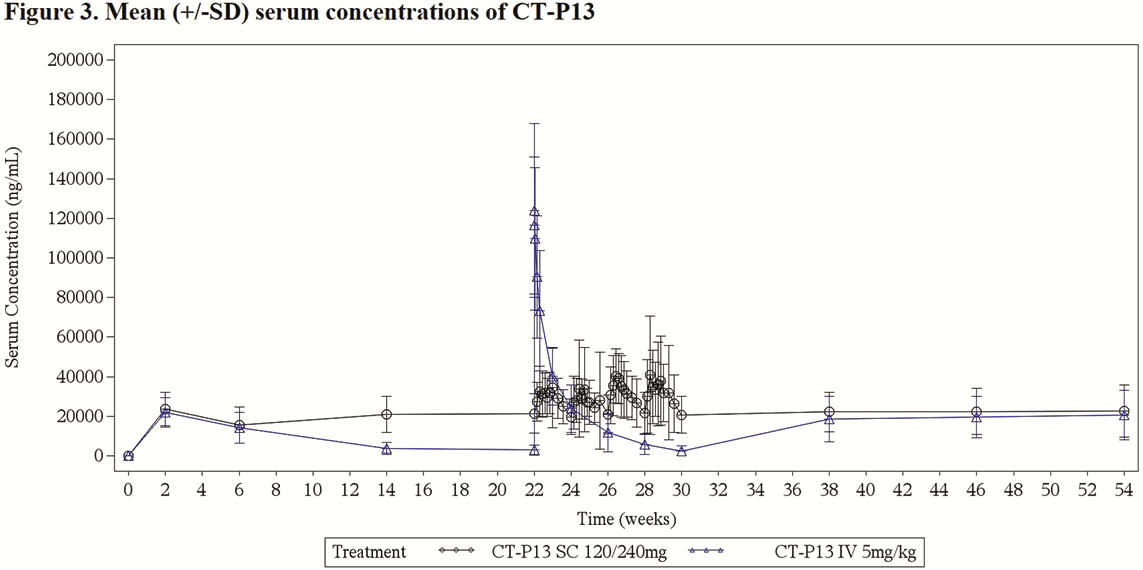OP24 A novel subcutaneous infliximab (CT-P13): 1-year results including switching results from intravenous infliximab (CT-P13) in patients with active Crohn’s disease and ulcerative colitis
S. Ben-Horin1, J. Leszczyszyn2, R. Dudkowiak2, A. Lahat3, B. Gawdis-Wojnarska4, A. Pukitis5, M. Horynski6, K. Farkas7, J. Kierkus8, M. Kowalski9, B.D. Ye10, W. Reinisch11, S.J. Lee12, S.H. Kim13, M.R. Kim13, Y.A. Kim13, H.N. Kim14, S. Schreiber15
1Department of Gastroenterology, Sheba Medical Center, University of Tel Aviv, Tel-Hashosmer, Israel, 2Department of Gastroenterology, Melita Medical, Wroclaw, Poland, 3Department of Gastroenterology, Tel Aviv University, Chaim Sheba Medical Center and Sackler School of Medicine, Ramat Gan, Israel, 4Department of Gastroenterology, Twoja Przychodnia, Szczecińskie Centrum Medyczne, Szczecin, Poland, 5Department of Gastroenterology, Center of Gastroenterology, Hepatology, and Nutrition, Pauls Stradins Clinical University Hospital, Riga, Latvia, 6Department of Gastroenterology, Endoskopia Sp. z o.o., Sopot, Poland, 7Department of Clinical Pharmacology, Szent Imre Egyetemi Oktatókórház, Budapest, Hungary, 8Klinika Gastroenterologii, Hepatologii, Zaburzeń Odżywiania i Pediatri, Pomnik Centrum Zdrowia Dziecka, Warsaw, Poland, 9Department of Gastroenterology, Centrum Diagnostyczno, Wloclawek, Poland, 10College of Medicine, Asan Medical Center, Gastroenterology and Inflammatory Bowel Disease Center, University of Ulsan, Seoul, Korea Republic of, 11Division of Gastroenterology and Hepatology, Medical University of Vienna, Vienna, Austria, 12Division of Clinical Development, CELLTRION Inc., Incheon, Korea Republic of, 13Department of Clinical Planning, CELLTRION Inc., Incheon, Korea Republic of, 14Department of Clinical Statistics, CELLTRION Inc., Incheon, Korea Republic of, 15Department of Medicine I, University Hospital Schleswig-Holstein, Kiel, Germany
Background
Two randomised controlled trials of a novel subcutaneous (SC) formulation of infliximab in patients with active rheumatoid arthritis1 and in patients with active Crohn’s disease (CD) and ulcerative colitis (UC)2 confirmed comparable clinical efficacy and safety of CT-P13 SC with CT-P13 intravenous (IV) up to Week 30. We now present the efficacy, pharmacokinetics (PK) and safety of CT-P13 SC over 1-year in the active CD and UC trial, including the outcomes of switching from CT-P13 IV to CT-P13 SC.
Methods
After loading doses of IV 5 mg/kg at Weeks 0 and 2, patients were randomised at Week 6 to receive either SC 120 mg (<80 kg) or 240 mg (≥80 kg) every 2 weeks (SC arm), or continued on IV 5 mg/kg every 8 weeks (IV arm). From Week 30, IV 5 mg/kg was switched to either SC 120 or 240 mg based on the patients’ body weight at Week 30. Patients who initially responded but experienced loss-of-response at Week 30 or beyond, were dose-escalated to SC 240 mg every 2 weeks.
Results
A total of 131 patients were randomised (66 to the SC arm and 65 to the IV arm); of whom, 105 (80.2%) patients completed the Week 54 visit (55 in the SC arm and 50 in the IV arm). The mean CDAI and partial Mayo scores decreased over time in the 2 arms until Week 30 and comparable improvement in clinical activity was observed at Week 54 after switching the remaining IV patients to SC (Figure 1 and 2). The rates of clinical response and remission were also maintained at Week 54 and the rate of mucosal healing in combined CD and UC was further improved at Week 54 (Table 1). The mean pre-dose serum concentrations in the IV arm increased to a similar level to SC arm after switching and maintained consistent levels until Week 54 (Figure 3). The safety profiles during the maintenance phase and on or after Week 30 were generally comparable between the 2 arms (Table 1). All of the localised injection site reactions were grade 1 or 2 in intensity and majority of patients recovered without any treatments.




Conclusion
These results of CT-P13 SC 1-year study in active CD and UC show comparable efficacy and safety of the SC and IV formulations, which were not affected by a switch of IV patients to SC route. The PK as manifested by trough concentrations of the drug, increased after switching from IV to SC. These observations support the first infliximab SC formulation as a viable therapeutic agent to expand patients’ treatment options.
Westhovens R,
Schreiber S.


